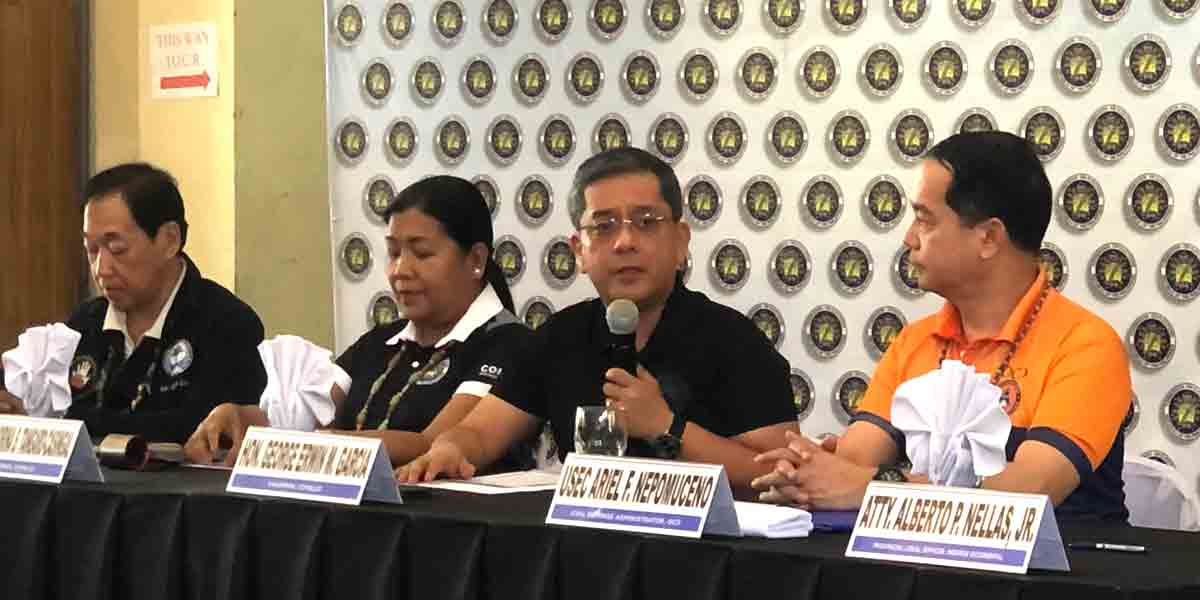By Herbert Vego
BY chance, I saw Facebook pictures of Raisa Treñas-Chu showing her amid the ruins of Fort San Pedro. The caption said that the only daughter of Mayor Treñas and restaurateur Rosalie Sarabia-Treñas was reminiscing about her childhood days when her parents would take her there.
On another day, I read a brief news item revealing that Mayor Treñas and the National Museum of the Philippines’ (NMP) Director-General Jeremy Barns had initiated discussion on the fort’s restoration.
“They will determine if the old foundation is still there because the old plan still exists. They will start working from the old foundation,” Treñas told Perla Lena of the Philippine News Agency (PNA).
I felt good, saying to myself, “Ahh, finally, after a long wait.”
It was in 2016 when I first wrote about the planned restoration of Fort San Pedro as a significant portion of a law that Treñas himself had authored during his incumbency as IloiloCity congressman.
Fort Pedro was one of the seven heritage sites sought to be restored by his bill which was signed into law (Republic Act 10555) in 2013 by then President Benigno Aquino III.
It is an act declaring the Jaro Cathedral, Molo Church, the Iloilo City Central Business District, Plaza Libertad, Jaro Plaza Complex, Molo Plaza and Fort San Pedro as cultural heritage tourism zones.
Some of them have been fully restored, as far back as possible to their original appearance.
None of us alive today have seen Fort San Pedro (not to be confused with Fort San Pedro, Cebu City) in its totality.
As far as today’s generation is concerned, nothing is there but parts of its foundation, bastions and ruins that still jut out of sea level where the mammoth 2,564-square meter fortress used to stand.
These vestiges of the fallen historical structure could still be reinforced into the restored fort for tourism purposes.
Based on historical documents, the Spanish colonizers built the original La Fuerza de San Pedro out of earthworks and wooden palisades between 1603 and 1616 for defense against Dutch and English marauders.
In 1617, a Dutch squadron of 10 warships came and engaged the Spanish defenders manning the fort. The Dutch lost the battle.
In 1738, Fort San Pedro was reconstructed, this time with 30-foot thick stones replacing earthworks.
It was because of Fort San Pedro – with 50 guns and three mortars blazing – that the Spanish government in Iloilo initially repelled the invading Americans in 1899. Eventually, however, a larger reinforcement of American marines forced the surviving Spanish soldiers to surrender.
In 1937, years after the fall of the Spanish regime, the US Navy turned the fort over to the Philippine Army to become its headquarters.
During World War II, the invading Japanese forces drove the Army out and took over Fort San Pedro, which also served as a dungeon for captured Filipino guerrillas.
In March 1845, combined forces from the United States Navy and the US Air Force bombed all Japanese installations in Iloilo City, including Fort San Pedro which disintegrated rubbles which are still visible in the seashore today.
Today, what used to be Fort San Pedro is a drive-in restaurant.
When fully restored, it would surely afford natives and tourists the opportunity to come and view it as it looked during the Spanish era.
-oOo-
FOR A SUSTAINABLE POWER INDUSTRY
IN coordination with the Department of Energy (DOE), the Energy Regulatory Commission (ERC) and MORE Electric and Power Corporation(MORE Power), the Independent Electricity Market Operator of the Philippines Inc. (IEMOP) presented this year’s Philippine Electric Power Industry Forum (PEPIF) at the Iloilo Convention Center (ICON) last Friday, April 5, on the theme, “Powering a Sustainable and Secure Energy Future for the Country”.
Now on its second year, PEPIF focused on advancing the transition toward sustainable energy while ensuring energy security.
PEPIF aims to bring together key stakeholders in the Philippine electric power industry to discuss pressing issues and concerns and to promote synergy among stakeholders.
On the part of MORE Power), it is now on the final stage of its modernization program budgeted at P1.8-billion. Included in the modernization program are the installation of new electric meters, replacement of electric poles, transformers, conductors and improvement of substation facilities.
MORE Power President and Chief Operating Officer Roel Z. Castro said that the program aims to “provide Iloilo a more reliable, safer and cheaper electricity supply than they got from the previous utility.”






















